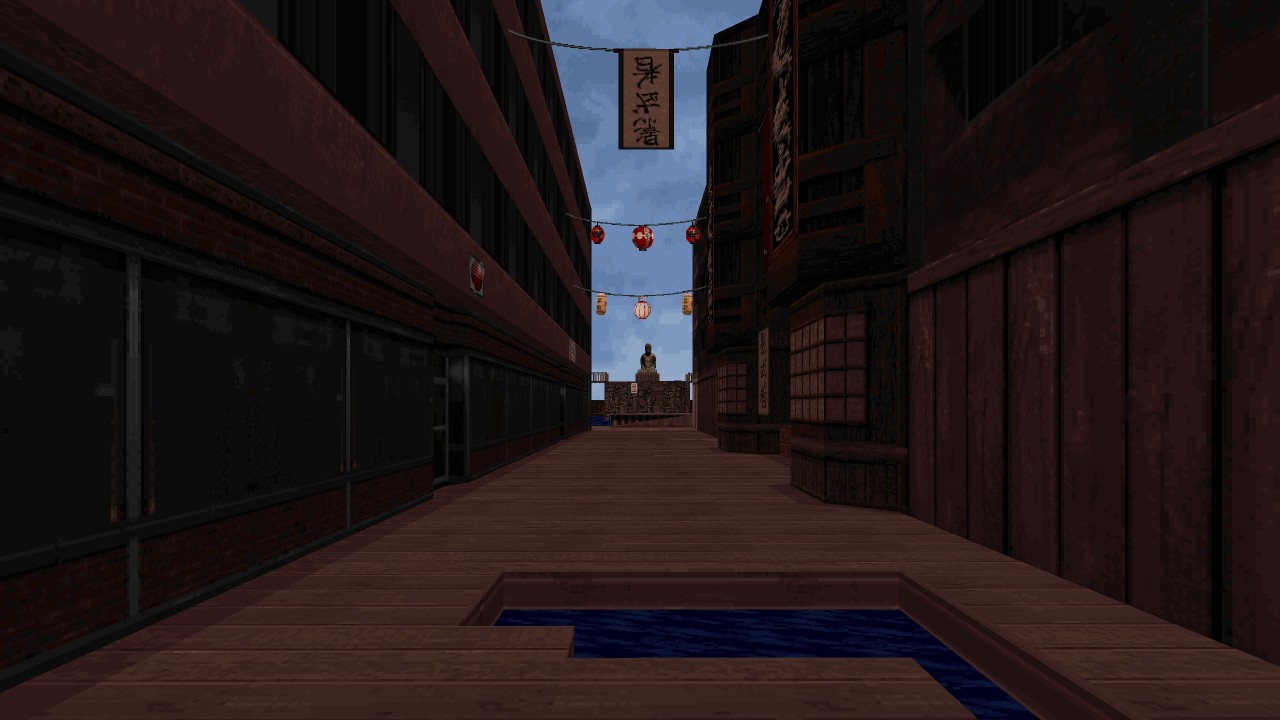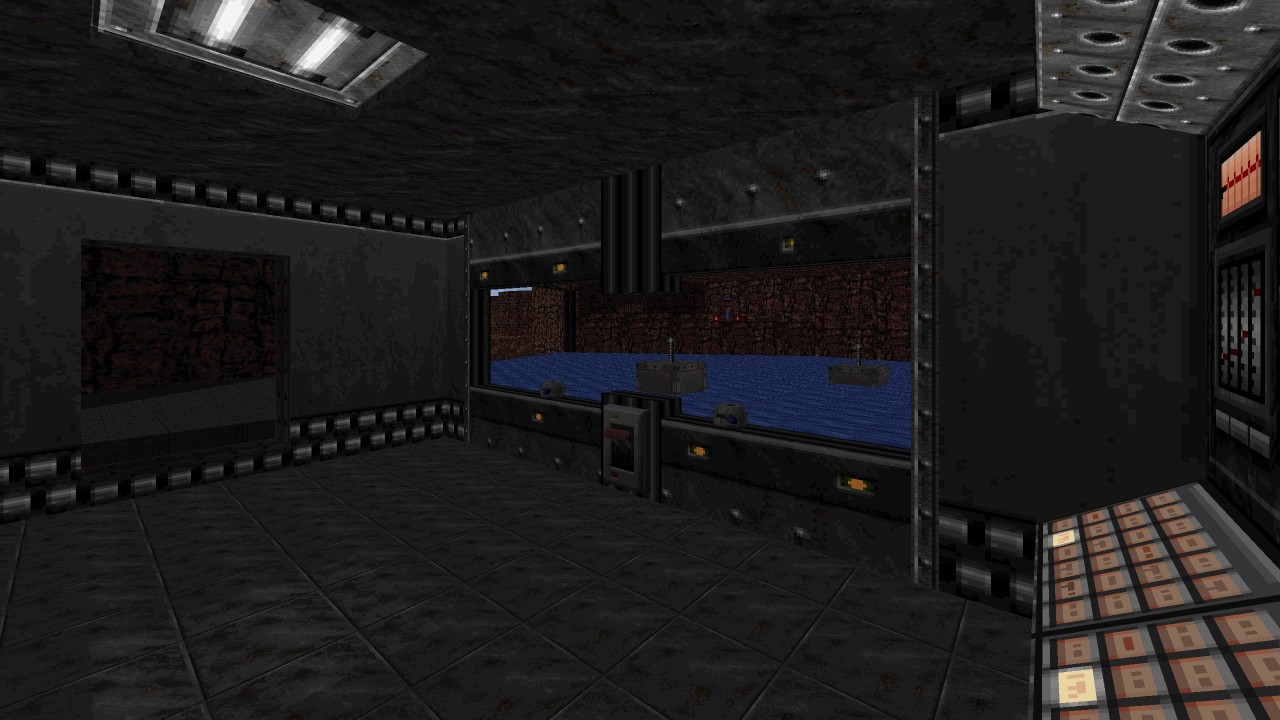Introduction
With renewed fame thanks to his reboot video game series, Lo Wang was in the middle of shooting a Tomb Raider and Shadow Warrior movie crossover before the lead actress got herself kidnapped by an occult branch with links to Zilla. Pressed to rescue her with an offer he can’t refuse, debut actor Lo Wang jumps at the chance, grabs his sword and rides off in his boat.
Review
Gaining a comfortable foothold to get started becomes an arduous task having to first tackle against the town perimeter defences. Taking damage seems inevitable when attempting to close the gap as a barrage of gunfire and crossbow bolts come whizzing by from all angles. Without suitable equipment for the task on hand you’re forced to push on toward dry land where healing and weapon supplies are located, including an armour set just sitting there as perfect bait. Should your enemies then gain momentum by dishing out too much punishment, it can actually become a rough time to keep going, especially as Warriors turn the docks into a stickybomb minefield. You do have a boat which itself is a fast machine but serves limited mobility to avoid attacks. Dual machine guns mounted on the vehicle otherwise make short work of foes and only asks for taking additional risks to get into an effective range. Any lingering bombs can also be triggered to avoid being on the receiving end making it an apt minesweeper tool. The boat is an invaluable asset to start with but shouldn’t be relied on, as during one attempt I tried being clever by driving further inland only to be a sitting duck once a Shadow threw out his special attack. If a frontal assault isn’t desirable there are luckily alternatives to tackle the problem either by taking a side route instead or diving underwater with access to the entire outer layout to find a safe place to surface from. Before proceeding any further into enemy territory my personal goal was to clear out the immediate area so I didn’t need to worry about my flanks, but still died often due to some trickier enemy positioning to cause panic and retreating indoors is met with a resistance to push back the effort.
Getting beyond these town defences only serves as one ingredient to the full course. SUZHOU as a whole often changes things up from milestone to milestone, the level is surprisingly dense for its scale with a varied set of activities to conquer, almost as if we’re playing in parallel to Methy’s own experimentions with Shadow Warrior’s feature set. Progression otherwise remains focused around key acquisition that usually uncovers another sizeable portion to contend with. Silver key in hand and having reached a point to start kicking down doors, it turns out these interior spaces remain just as dangerous as those outside. The restaurant in particular is jam packed with a smilar roster only at close quarters, having to be mindful not to get caught up around Ninja explosives, while they like popping shots from behind tables. Rippers and Ghosts otherwise lurk in the tighter hallways dissuading you from tossing out explosives. However there’s always an option to tackle these problems, it became an engaging aspect of SUZHOU by realising what those are given the situation. If bashing down the front entrance is too hot, I could always attempt sneaking through the backdoor instead. The dojo holds two important keys and seeing as the restaurant only helps to gain access to its upper floors, I later discovered a possible sequence break that ignores grabbing both silver and bronze keys, to instead head straight for the gold key skipping by some hazards.
SUZHOU does a lot with its available space, taking the fight away from town and into its surrounding areas that are visible from the beginning. Beyond the forest lies a temple that involves defending against a wave based skirmish taking advantage of a conveniently placed turret. Should your rhythm happen to fall out of line this fight can escalate with each incoming wave, where I’d just barely find myself catching up in time to push back opponents. The surrounding cliff edges otherwise leads to some great use of remote controlled vehicle effects. Large blocks can be moved to create a platforming route across a fast water current, except one block is activated from a different position. Necessitating two jumping routes gets twice the mileage out of a single idea unless you position them just right the first time. With this in mind I can’t help but find the music transition to be a little out of place with the pacing, while being a nice touch as a victory song having beaten the turret section. Had this instead been a penultimate fight into the temple proper and the forest continue its own path towards the red key, playing the main theme would have absolutely felt on point. Capping off the level is a standard boss encounter guarding the exit switch, where in I had more than enough munitions to defeat it without much issue. If not there’s still a turret sitting just outside the gate and a repair kit can be found should it be required. The Serpent can easily be cheesed however by hiding behind the wall and ricocheting grenades over the gap, so one way or another there continues to be an option at hand should one tactic not be viable.
Conclusion
SUZHOU can be a hectic way to start a level, but with many options at your disposal it feels worthwhile taking on these challenges. The artificial lake town is a dense playground, where locales and activities remain varied while always keeping the action at the centre of attention. From start to finish it’s apparent these additions come from experimenting with different ideas to see what sticks, but at no point does the gameplay itself feel out of place.





